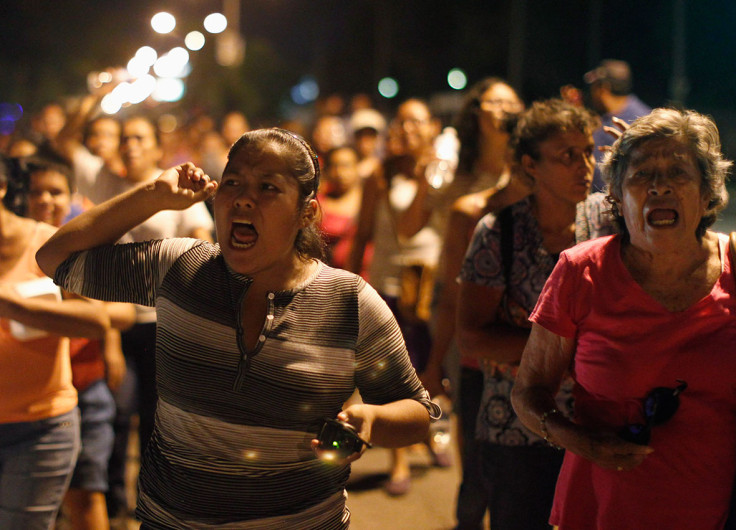Mexico's 43 Missing Students: Theories Behind Mysterious Disappearance

More than 40 students from Ayotzinapa Teacher Training College "Raul Isidro Burgos" disappeared after clashes with police in Iguala, Guerrero state, on 26 September.
The students are believed to have been kidnapped after police opened fire on a bus that they claimed had been hijacked by the youths.
Clashes resulted in six people dead, 25 wounded and 43 students missing.
Eyewitnesses said that the students were forced to sit in police cars and taken into custody.
The discovery of several mass graves on the outskirts of Iguala, fuelled fears that the youths could have been killed by drug cartels, aided by corrupted police.
Nearly one month since the students were abducted, theories about the fate of the youths and the reasons behind their mysterious disappearance are proliferating on the internet.

'War Against Critical Thinking'
It is believed that the youths were protesting against what they called "discriminatory hiring practices" for teachers, which favour urban students over rural applicants.
According to some, the missing students are only some of the hundreds of people – mainly anti-corruption and human rights activists - who are targeted each year in Mexico by drug cartels and corrupt members of the government.
In a Guardian report about marches staged to urge the Mexican government to step up the efforts to find the students, an NGO spokesperson said that the mass kidnapping represents "a war against critical thinking, whereas political elites are sharing the profits with the organised crime. This is a narco-government."
'Drug Cartels Massacred the Students'
A few weeks after the disappearance, two hit men confessed to executing 17 of the students and dumping them in a mass grave containing 28 bodies, but Mexico's attorney general Jesus Murillo Karam said DNA tests showed that the corpses were not those of the missing group.
However, further forensic tests are being carried out on at least four other mass graves recently discovered.
Karam said that at least 50 suspects, including more than 20 police officers who confessed to being linked with the disappearance, were arrested.
The policemen are believed to have handed the students over to drug cartels Guerreros Unido, or United Warriors. According to others, the students were handed over to the Beltrán Leyva cartel.
Benjamin Mondragon Pereda, an alleged leader of Guerreros Unido, killed himself during a confrontation with authorities, who, however, were not able to confirm whether he was involved in the students' disappearances.
In the same week, a report by National Security Commissioner Monte Alejandro Rubido, said there are links between drug gangs and police in Mexico.
Drug cartels are criminal groups who fight against each other over the hegemony of the Mexican territories. The cartels often kidnap, torture and kill people as a warning sign or a way to instil fear and intimidation.
Andrew Chesnut, professor of religious studies at Virginia Commonwealth University, thinks that the Guerreros Unidos is most likely responsible for the students' disappearance.
Speaking to IBTimes UK, he explained that according to one of the theories on the abduction, the students were "disappeared as revenge for not paying extortion money."
'Iguala Mayor Involved in the Mass Abduction'
However, Chesnut said there is another "more plausible theory" which involves the Iguala mayor, Jose Luis Abarca, who has been missing since the mass kidnapping took place.
"Given the history of left-wing political activism of Teachers College's students and antipathy toward Abarca, the fact that they were disappeared after a skirmish with local police related to a protest they had organised, the most likely scenario is that local political authorities colluded with the Guerreros Unidos cartel, which had infiltrated both the municipal government and police force, to abduct and disappear the students," he said.
"The fact that both the Iguala mayor and his chief of security are on the lam, supports this view."
Other people alleged that fugitive Abarca ordered Iguala's police force to attack the students over fears that their protest would disrupt a speech by his wife, Maria de los Angeles Pineda Villa.
Abarca has been accused in the past of direct participation in torture and murders of activists, while Pineda Villa has links to drug cartels as members of her family (at least three brothers) are part of Beltrán Leyva.
© Copyright IBTimes 2025. All rights reserved.




















